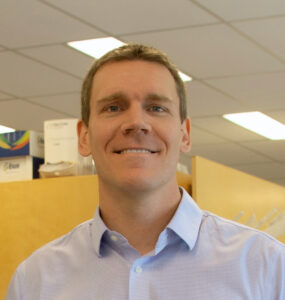Christopher Thome, PhD
 |
NOSM University 935 Ramsey Lake Road Sudbury ON Canada P3E 2C6 Phone: (705) 662-7222 Fax: (705) 675-4858 E-mail: cthome@nosm.ca |
Assistant Professor, Medical Sciences Division, NOSM University
Cross Appointed Faculty, Department of Biology, Laurentian University
Cross Appointed Faculty, Department of Chemistry & Biochemistry, Laurentian University
Core Faculty, Biomolecular Sciences Program, Laurentian University
Adjunct Professor, Department of Physics & Astronomy, McMaster University
Affiliate Scientist, Health Sciences North Research Institute
Education/Training
2015-2018 |
Post-Doctoral Fellowship; Radiation Biology Department of Biology Laurentian University, Sudbury, Ontario, Canada |
2011-2015 |
PhD.; Medical Physics Department of Medical Physics & Applied Radiation Sciences McMaster University, Hamilton, Ontario, Canada |
2010-2011 |
MSc.; Health and Radiation Physics Department of Medical Physics & Applied Radiation Sciences McMaster University, Hamilton, Ontario, Canada |
2006-2010 |
B.MSc.; Human Physiology Honours; Medical Biophysics Minor Schulich School of Medicine & Dentistry Western University, London, Ontario, Canada |
Research Investigations
The primary objective of my research program is to understand the biophysical interactions of low dose ionizing radiation and the potential impacts of human exposures. One of my specific research aims is to investigate the role of natural background radiation on normal cellular function and genomic stability. These experiments are being conducted within SNOLAB; a state-of-the-art laboratory located 2 km underground in an active mine in Sudbury. The rock overburden effectively shields out cosmic radiation making this one of the few facilities in the world where this type of research can be conducted. We are currently studying sub-background radiation effects on a variety of model organisms including human cell culture, yeast, C. elegans, and Drosophila. I am also interested in ocular effects of low dose radiation. The lens of the eye is regarded as one of the most radiosensitive tissues, however, the exact mechanisms by which radiation exposure can lead to opacities and cataracts remains unknown. We are exploring these questions through studying the radiation response in the cells of the lens focusing on the induction of genomic damage and oxidative stress, functional changes, and transcriptional regulatory mechanisms.
The second main focus of my research program is to explore innovative approaches to advance the use of ionizing radiation in the treatment of disease. One such application is the use of low dose broad field irradiation as a non-targeted radiotherapeutic. We are investigating the ability of ionizing radiation to promote tumour reduction via stimulation of the immune system, through a combination of clinical trials, small animal studies, and in-vitro cell culture experiments. I am also studying potential mitigation strategies for normal tissue toxicity during conventional high dose radiotherapy. Radiotherapy for intra-abdominal and pelvic malignancies inevitably includes the gastrointestinal tract in the irradiation field. Using modern molecular gene editing technologies, we are exploring the use of genetically engineered bacterial species to modulate the host microbiome as a means to prevent radiation-induced bowel injury and/or accelerate recovery.
Selected Publications
Vigneux G, Pirkkanen J, Laframboise T, Prescott H, Tharmalingam S, Thome C. 2022. Radiation-induced alterations in adhesion, migration, and proliferation in lens epithelial cells and implications for cataract development. Bioengineering. 9 (1) 29. Link
Pirkkanen J, Laframboise T, Zarnke A, Liimatainen P, Sonley T, Hood M, Obaid M, Tai TC, Lees SJ, Boreham DR, Thome C. 2021. A novel specialized tissue culture incubator designed and engineered for radiobiology experiments in a sub-natural background radiation environment. J Environ Radioact. 228 106512. Link
Jameus A, Kennedy A, Thome C. 2021. Hematological changes following low dose radiation therapy and comparison to current standard of care cancer treatments. Dose Response. 19 (4) 1–19. Link
Pirkkanen J, Zarnke AM, Laframboise T, Lees S, Tai TC, Boreham DR, Thome C. 2020. A research environment 2 km deep-underground impacts embryonic development in lake whitefish (Coregonus clupeaformis). Front Earth Sci. 8 (327) 1–9. Link
Gaudreau K*, Thome C*, Weaver B, Boreham DR. 2020. Cataract formation and low dose radiation exposure from head computed tomography (CT) scans in Ontario, Canada, 1994–2015. Radiat Res. 193(4) 322–330. *Co-first author. Link
Thome C, Tharmalingam S, Pirkkanen J, Zarnke A, Laframboise T, Boreham, DR. 2017. The REPAIR project: Examining the biological impacts of sub-background radiation exposure within SNOLAB, a deep underground laboratory. Radiat Res. 188 (4.2) 470–474. Link
Selected Media Coverage
Radiation Research Society Vodcasts
Links to Websites and Social Media


